Oblique crunches (side crunches) are similar to regular crunches, except they involve crunching the side abs (oblique).
The side crunch is a core exercise that strengthens the obliques and the other core muscles. Engaging the muscles that help to support and stabilize the spine, oblique crunches can ease back pain and safeguard against harm.
There are several variations of the oblique crunch. You can perform them flat on the ground, elevate your feet on a stability ball (for added balance and core engagement), or hold a weight to increase the intensity.
Whatever you do, remember to do it in the best way possible.
Use our free calculator to know your weight loss calories requirement.
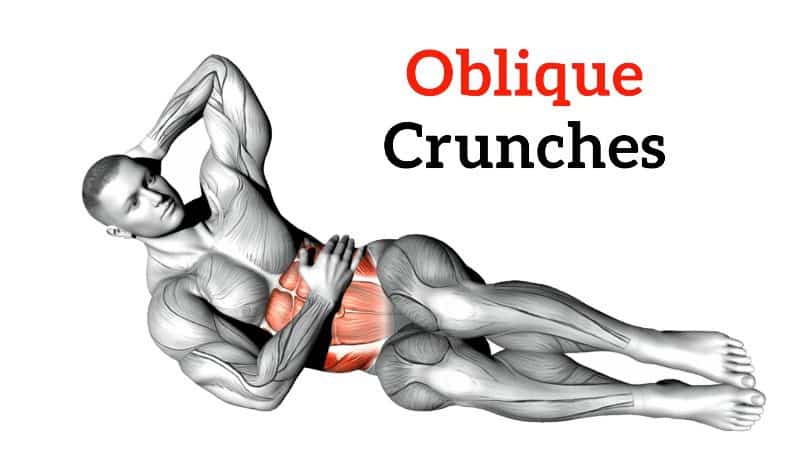
- Oblique Crunch Muscles Worked
- How To Do Floor Oblique Crunch
- Tips and Form
- 7 Best Variations Of Oblique Crunch
- 1. Standing Oblique Crunch
- 2. Oblique Crunch On Stability Ball
- 3. Oblique V-Up
- 4. Standing Cable Oblique Crunch
- 5. Bicycle Crunch
- 6. Cable Oblique Crunch On Bosu Ball
- 7. Alternate Oblique Crunch
- References
Oblique Crunch Muscles Worked
- Primary Muscles Worked: Oblique
- Secondary Muscles Worked: Rectus Abdominis, Transverse Abdominis and Hip Flexors (like the Iliopsoas).
- Stabilizing Muscles: Erector Spinae and Adductors (inner thigh muscles)
How To Do Floor Oblique Crunch
- Let’s get you in position. Lie down on your back, knees bent, feet flat on the floor. Comfortable? Good.
- Put your left hand behind your head and your right hand across your body on your obliques.
- Placing your hand on your obliques can help you feel the muscles contract and improve the mind-muscle connection.
- Lift your left shoulder toward your left knee, twisting your torso as you crunch up. Focus on feeling the squeeze in your obliques.
- Hold this position for a second, contracting your obliques as hard as possible.
- Now, lower back down, but don’t let those shoulders touch the floor. We’re keeping the tension on.
- Do all the reps on the left side, and then do the same number of reps on the right side.
- Remember, I want you to feel this in your sides, not your neck. If your neck’s complaining, ease up a bit.
Tips and Form
- Avoid pulling on your neck with your hand. Instead, let the oblique muscles do the work.
- Aim to get a good contraction at the top of the crunch, and fully relax the muscles at the bottom.
- Ensure you’re working both sides evenly. After completing a set on one side, switch your hand position and work the other oblique.
- Exhale as you crunch upwards and inhale as you return to the starting position.
- You don’t need to lift too high. It’s about the contraction of the oblique muscles, not how high you can lift your shoulders.
- It’s better to perform fewer reps with correct form than many reps with poor technique.
- You should perform this exercise slowly and steadily to work the oblique muscle.
- You can make this oblique crunch more difficult by holding a weight plate on your chest.
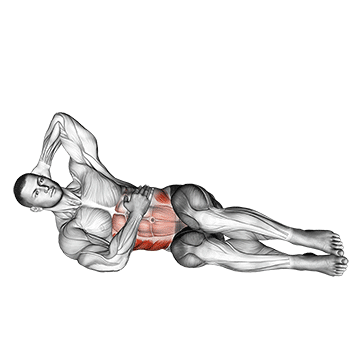
Known Your Body Fat %: Try Free Calculator To Know Your Body Fat Percentage
7 Best Variations Of Oblique Crunch
The oblique crunch is adaptable for all fitness levels. Beginners can start with standing oblique crunches for a simpler version, while more advanced options like stability balls or oblique crunches target deeper muscles.
To increase intensity, add weights, but always prioritize proper form for the best results and injury prevention.
1. Standing Oblique Crunch
The standing side crunches are the same as the regular oblique crunches, except they are performed in a standing position.
Oblique crunches, which are done while standing, help build obliques and abdominal muscles for strength and stability. Furthermore, they improve balance.
Whether a beginner or an experienced exerciser, these crunches are a great addition to your routine.
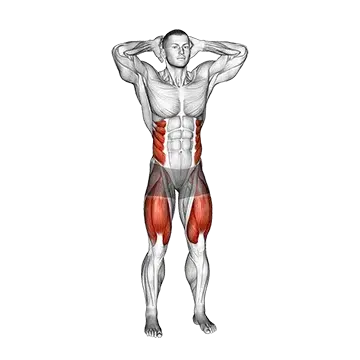
2. Oblique Crunch On Stability Ball
You can make the oblique crunch more challenging by moving while lying your upper body down on a soft exercise/Swiss ball.
Once you know how to do a few floor-based oblique crunches, one way to make them harder is to try a stability ball side crunch.
This moves harder because you must use your core and stabilizer muscles more to stay in position and do the movement.
Moving your hips further up the ball to make this stability ball oblique crunch more challenging. This will increase the range of motion and further challenge your obliques and core muscles.
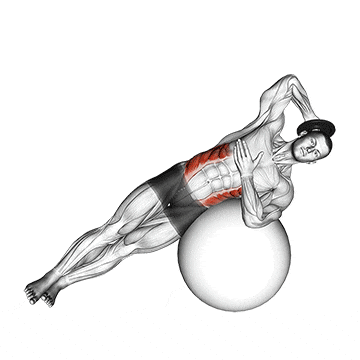
3. Oblique V-Up
One exercise that trains both the internal and external obliques and other abdominal muscles is the oblique V-up, also known as a side jackknife Crunch.
The Side jackknife is a moderate-level oblique exercise that only requires the use of a mat.
Once you master the basic oblique V-up, you can increase the difficulty of the exercise by raising both legs off the ground.
The double side jackknife follows all the same steps as the side jackknife, except that you bring both your feet up while you raise your upper body.
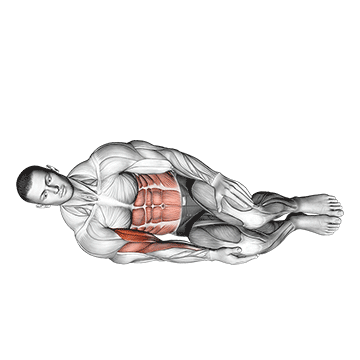
4. Standing Cable Oblique Crunch
When doing an abs workout with a cable machine, you can add plenty of single-arm exercises to correct potential imbalances.
Standing oblique crunches, also popular as side crunches, are effective abdominal exercises that target your oblique muscles and are performed by assuming a standing position.
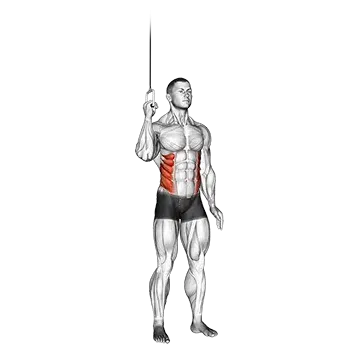
5. Bicycle Crunch
In a 2001 study by ACE, it was found that in compared to the standard crunch, the bicycle crunch produces 148% more mean activity in the abs and 190% more mean activity in the obliques.
To make the exercise easier, you can make the angle between your knees smaller, and to make it harder, you can make the angle between your legs bigger.
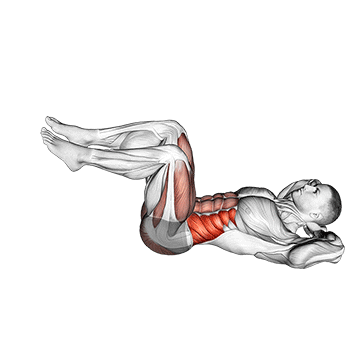
6. Cable Oblique Crunch On Bosu Ball
If you’re looking for a way to be more creative with your oblique crunches, why not try this exercise?
The Bosu ball balances the equation. It’s a great tool for strengthening your core and is often used in physical therapy. It’s a reliable way to train your body control.
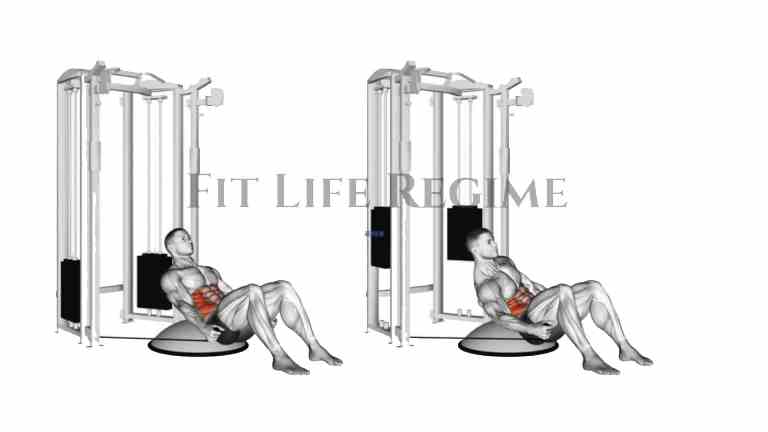
7. Alternate Oblique Crunch
The Alternate Oblique Crunch strengthens both sides of your core evenly, improving muscle balance and flexibility in your spine. Switching sides keeps your obliques under tension longer for better activation.
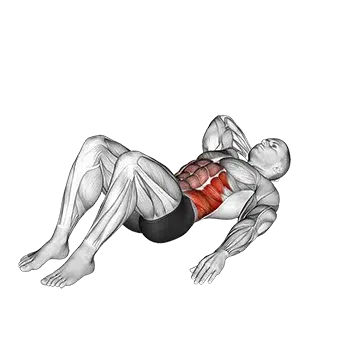
References
- https://biologydictionary.net/oblique-muscle/
- Clark AW, Goedeke MK, Cunningham SR, Rockwell DE, Lehecka BJ, Manske RC, Smith BS. Effects of Pelvic and Core Strength Training on High School Cross-Country Race Times. J Strength Cond Res. 2017;31(8):2289-2295. doi: 10.1519
- Nakai Y, Kawada M, Miyazaki T, Araki S, Takeshita Y, Kiyama R. A self-oblique exercise that activates the coordinated activity of abdominal and hip muscles–A pilot study. PLoS One. 2021;16(8):e0255035. Published online 2021 Aug 12. doi:10.1371
- Whiting WC, Rugg S, Coleman A, Vincent WJ. Muscle Activity During Sit-Ups Using Abdominal Exercise Devices. J Strength Cond Res. 1999;13(4):339-345.

Manish is a NASM-certified fitness and nutrition coach with over 10 years of experience in weight lifting and fat loss fitness coaching. He specializes in gym-based training and has a lot of knowledge about exercise, lifting technique, biomechanics, and more.
Through “Fit Life Regime,” he generously shares the insights he’s gained over a decade in the field. His goal is to equip others with the knowledge to start their own fitness journey.
